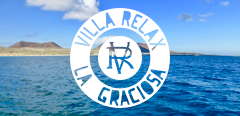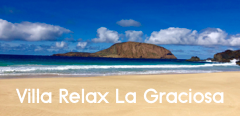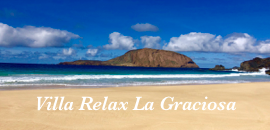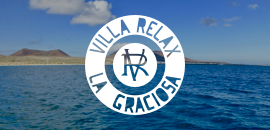The name of Maspalomas
To Néstor Alamo, the name of Maspalomas be related to a Mallorcan conqueror Rodrigo Mas de Palomar , who obtained land in the area, and from there his surname degenerated to become the ” Maspaloma ” or actual ” Maspalomas” . In this line , in the study of the toponymy of Gran Canaria, the linguist Maximian Trapero classifies this name as a Catalan , from Mas Catalan surname, which is considered “probably present as lexical element in compound names Maspalomas, Mascuervo and Masamoya ” . However, there is no, or oral , except in the designated first documentary record, that anyone with these surnames will stop off in this part of the island, as a conqueror or grantee of any property . Moreover, these lands will not be South spread after the Conquest , being under direct control of the Crown, that is, of the Crown . This is clearly reflected in the book of Repartimientos of Gran Canaria, in which not only no distribution of land and water in this area is collected, but even that name or similar appears on the list of beneficiaries .
There are references to Francisco Palomar , rich Genoese merchant ” resident of the city of Valencia” , which was in Gran Canaria in 1494 , friend and partner of the conqueror Alonso Fernández de Lugo who purchased 87 Guanche slaves captured in Guimar , and which would then be sold in said city of Spanish nancy. The Palomar or Francisco Palomares , seized properties on the island, but on the opposite end of Maspalomas . In the same year 1494 the noted buy Fernández de Lugo, in very favorable conditions , the sugar mill and surrounding land it owned in Agaete, properties that had to come off to meet the expenses of the conquest of Tenerife.
As for the name Mas, Antonio de Viana picks it up in his Antiquities of the Fortunate Isles , written in the early seventeenth century work, although as corresponding to three conquerors of the island of Tenerife , something that also plays the historian Joseph Viera y Clavijo , in the second half of the eighteenth century.
What appears beyond doubt is that from the outset , the Chronicles show us clearly that placename :
” They found the spañoles diuidida Canaria island into two manors , vno Telde to the East , set amid the islets Maspaloma i tip ” . ( Book Two continues the Conquest of Canaria, Scudero Pedro Gomes , XV) .
In the story of the Spanish conquest of the island to conduct the historian Marin de Cubas in 1687 , records of the name :
” Real de Las Palmas from coast to corrian and Tirajana Maspalomas , and Missoni Aguimes in Canyon Guaiadeque hallo Pedro de Vera won a canary with no huio xristiano and wondered what was , and was called John Major , native of Lanzarote. .. ” ( Arias Tomás Marín de Cubas , History of the Seven Islands of Canaria, 1687 ) .
Sebastián Jiménez Sánchez , in his unpublished etymological dictionary and toponímico Gran Canaria, provides no details of interest about the origin of this place name, limited to describe the place , highlighting the originality of vegetation and landscape , and the fact of being a ” point visited by outsiders and natural and great possibilities in the future.”
As for his appearance in the oldest map of the island, the Italian engineer Leonardo Torriani , who by order of Philip II scour the Canary Islands between the last two decades of the sixteenth century , in order to report on the status of its fortifications, reflected in the map of Gran Canaria the place name of ” Maspalomas ” . Later Pedro Agustín del Castillo, in , gorgeous maps that accompany their Descripció of Yslas Canaria conducted in 1686 placed in turn the name ” more Palomas ” , in reference to the island , assembled in greater detail; and collecting the entire archipelago , where ” Maspaloma ” appears . A few years later, 1690 , is the map of the Canary Islands and Madeira Venetian cosmógrafo Coronelli , which also included the town, and also in the singular.
More late, in 1764, George Glas, in the Archipelago map that incorporates a description of the islands, pointing at the extreme south of Gran Canaria to ” Maspalomas ” .
Also the entered other geographers in different cartographic representations that are made to the island during the eighteenth century , if Borda ( 1776 ) and Lopez ( 1780 ) , as stated Sabino Berthelot in his Natural History published in 1838. Also in the late eighteenth century is the letter of the French engineer M. Bonne, placing a ” Maspaloma ” in Gran Canaria west , almost to the height of Puerto de Mogan .
By the nineteenth century , there are many others , the map of Gran Canaria appearing in the already mentioned Natural History of the Canary Islands S. Berthelot , which includes the place name. Particularly interesting is a map of the island , 1806 , made by the painter José Acosta Ossavarry and that part of the record on the creation of new towns in Gran Canaria. In 1773 , at the request of the bishop of the diocese Canariense Fray Juan Bautista Cervera, the Cabildo of Gran Canaria the creation of three new towns in the valleys of Mogan , Veneguera and Tasarte , canyons of the Southwest of the island, raised floors fertile , and yet uninhabited crown lands . The administrative apathy made its proposal was delaying until 1806 , at the request of the Supreme Council of Castile, Osavarry handles a cartographic description of Gran Canaria, to accompany the rest of the necessary documentation for the purpose stated . The unique thing about this map is that a ‘ roxa line distinguishes the sparsely populated part of the island The pink color indicates the populous and zed ( in blue actually) and the uninhabited desert , where only look at The Village San Nicolas, small place, located to the west … “( Masseu Bethencourt , A. ) . Well, the indicated red line crosses the island from the cliffs of Women in the west and the mouth of the canyon Amurga , Southeast . Continuing south we find the ” P. de Maspalomas ” end of said grancanario sector that takes that name and as stated , is also part ” depopulated and desolate” of the Island
In the Atlas of Spain and its overseas possessions (1849 ) , by Francisco Coello , not a very successful mapping of Gran Canaria, in that the name ” Lagunas de Maspalomas ” appears on the waterfront , plus offers term ” Maspalomas ” placed quite inland. Moreover, in one of the copies of the Map of the Western Coast of Africa English Lieutenant W. Arlett , published in 1853 , the ” tip – Mas Palomas ” and the bay of the same name appears .
In mapping the Falconer Printing Paris , accompanying Historical , climatological and pathological studies of the Canary Islands ( 1876), Gregorio Chil y Naranjo, ” Mas Palomas ” on the general map of the archipelago, while in the Gran Canaria indicated ” Maspalomas” and ” Punta de Maspalomas” .
By the end of the century , in the Description of the Canary Islands drawn by Juan de la Puerta Canseco, a map of the Canary Islands where the South of Gran Canaria found the ” Punta de Mas Palomas ” is included . This map shows the different headlights or lights throughout the archipelago , consigning your order or importance , and a detailed account of its present state , whether on, under construction, in studio , etc. .. It indicates that the Maspalomas is first order, the most important of the island, and turned on .
By mere combination of words, it attempts to relate the place name with the abundance of birds in the area . In fact, José de Viera y Clavijo (1731-1813) , noted in his “Dictionary of Natural History of the Canary Islands ” , referring to the wild pigeons :
” … Abound in the islands , specializing in the Canary Islands , where the Charco de Maspalomas has had fame and renown for the great flocks that usually nest there.”
Similarly , David A. Bannerman said ” Maspalomas is in Spanish ” more pigeons ” ( Mas = more , pigeon = pigeons ) , and the name is very appropriate, as it is full of pigeons provided excellent hunting .”
Thus, Claudio de la Torre wrote in a guide on the eastern islands of the archipelago that :
” The name is due to step Maspalomas Doves Sahara, who come to quench their thirst during the day in the lagoon palm , returning to Africa after dark. The small pond attracts many birds desert land are deposited in different seeds , so they formed a tight oasis with the rarest examples of palm trees . ”
In similar terms Alejandro Ciorannescu expressed when he writes:
“Historically it has served sailors and pirates anchorage , by having water for watering . He has also been very many pigeons resting on his flight to Africa , of which he is named . ”
Afonso Leoncio Perez, in his ORegen and features of the Canarian toponyms states that the “name may come from the large number of birds gathered in the deltaic freshwater lake that existed here in the sixteenth and seventeenth centuries were given , was rainy period and where groundwater is not extracted . ”
Besides prints seen in previous texts regarding the daily movements of birds , forming the ground cover or the very existence of the pond , not everyone agrees admit that the name this territory South of Gran Canaria has to do , necessarily , with the abundance of pigeons and other bird species in the area.
Moreover, although the place name is mapped to the southern end of the island, it is certain that by extension , that name covered a much wider than the current space . This is reflected when designating the plains that were beyond Juan Grande, to Arguineguin. In this regard, the license granted by King Charles in 1677 to build the Castillo del Romeral , indicated the place ” in the calm of the coast of Maspalomas ” ( Cazorla Leon S. )
Although it appears mostly in the oldest documents in the singular , in others the term stated in plural , as is currently the case , and can be seen even within the same text in two ways , as in the will of Mr. Matthew Perez Villanueva , of October 21, 1710 ( Grimón Suárez , V. ) which includes within its goods :
” A farmhouse called Maspalomas and auido and had for real zedula of His Majesty , that will be two hundred bushels , all the more plain , with puddle called Maspaloma , …”
At other times it came to be separated into ” Paloma Mas ” or ” Mas Palomas ” , the latter being , which reaches up to now appear in certain publications by mistake or ignorance. The truth is that at present we have a unique sound and name, for it is not possible to determine in a clear origin.
















